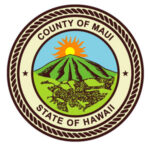Mar 30, 2011 | Community
 The Focus Maui Nui process identified the key role of government in responding to community values and needs, and the importance of open, ongoing communication. To promote this dialogue, we continue a series of profiles of newly appointed County Department Directors.
The Focus Maui Nui process identified the key role of government in responding to community values and needs, and the importance of open, ongoing communication. To promote this dialogue, we continue a series of profiles of newly appointed County Department Directors.
Sandy Baz had to hit the ground running when he took up his appointment as the County’s Budget Director in January this year—he had only a few weeks to prepare incoming Mayor Arakawa’s budget for Fiscal Year 2012, the period running from July 2011 through June 2012. The Mayor presented his Budget proposal in mid-March, and over the coming weeks, the proposal will be deliberated upon by the Council with input from Department Directors, discussed in public hearings attended by the Council across the County, and a final version adopted by June.
Baz’s main responsibility is preparing and administering the County budget. The budget cycle begins in August, when County Departments begin submitting funding requests, and initial public testimony to provide community input takes place in all County planning districts. The Budget Director and staff review, analyze and coordinate Department requests and shape the budget proposal in concert with the Mayor, who sets policy priorities.
Baz was born and raised on Maui and is a graduate of St. Anthony High School. He holds a degree in business management and is a winner of the Pacific Business News “Forty Under 40” award in addition to other leadership awards. As the former Executive Director of MEO, Baz reflects, “I look forward to drawing on my previous experience to improve accountability and specifically to link performance criteria to measurable outcomes. I am enjoying my role of aligning the mission and goals of the County and its Departments with the needs of the community and within the financial resources available.”
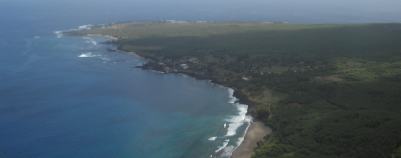
Mar 24, 2011 | Environment
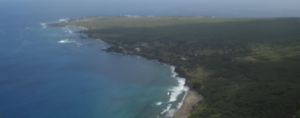
Ten things you can do to protect the Environment:
- Buy local
- Car pool to work
- Grow native plants in your yard
- Use biodegradable products whenever possible
- Install rooftop photovoltaic panels for hot water
- Maintain your car, especially if it’s an older model
- Support your local watershed partnership
- Adopt your favorite park and help keep it tidy
- Teach your children to protect the environment
- Turn off lights in unoccupied rooms
What else can we do to protect the environment? Leave us a comment and share your ideas!
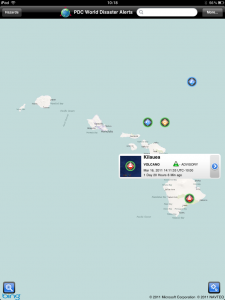
Mar 17, 2011 | Environment

PDC World Disaster Alerts app on iPad
Disaster Alert, the free app developed by the Kihei-based Pacific Disaster Center (PDC) for iOS devices (iPhone, iPod touch and iPad) and Google’s Android platform, was featured in an article published today in the online version of USA Today.
A shorter version is expected to appear in the weekend print edition of USA Today. PDC has been advised that the article may be featured on CNN this Sunday, March 10th, at 2.30 p.m. EST.
The article describes the spike in disaster app downloads following the earthquake and tsunami in Japan on March 11th. Downloads of PDC’s Disaster Alert tripled from the average of 3,500 downloads per week, and has now reached close to 100,000 downloads, ranked #30 and #41 top free (News) for iPad and iPhone, respectively.
Disaster Alert provides instant access to global “active hazards”, including weather-related disasters, earthquakes, volcanic eruptions, and tsunamis. The USA Today article quotes PDC Executive Director Ray Shirkhodai: “We harvest and present a lot of data from more than 65 trusted sources and mark those that are potentially dangerous.” The app monitors multiple agencies in real time, and information can be disseminated well ahead of mainstream media broadcasts.
The Disaster Alert app launch was featured in a Focus Maui Nui article published by the Maui News on August 16, 2010.
Mar 16, 2011 | Community, Environment
 All volunteers who make a difference in the community by improving the environment deserve recognition, but volunteering every day for ten years and transforming an unkempt coastline into a thriving native ecosystem represents an extraordinary achievement.
All volunteers who make a difference in the community by improving the environment deserve recognition, but volunteering every day for ten years and transforming an unkempt coastline into a thriving native ecosystem represents an extraordinary achievement.
Mike Perry, retired Lahaina Postmaster, has been instrumental in transforming 20 acres of Kanaha Beach Park, makai of the airport in Kahului, into a well-cared for habitat that supports diverse native plants and wildlife. Over the years, and with occasional help, Perry has cleared trash, pruned the understory of trees, trimmed back the kiawe, tended the Park’s wetlands, removed invasive weeds – an ongoing, endless chore – and nurtured heritage species that are now protecting the natural dunes.
“The County takes care of the campground in the park and mows the grassy areas, and Maui Community Work Day removes the green waste, but there’s a lot to do. I always welcome help, and there’s a lot that volunteers can learn about a unique environment of native plants growing naturally in a beachfront setting,” says Perry. (Volunteers can reach Perry through Maui Community Work Day). “Because this work does not depend on outside funding or grants, it’s sustainable all the while the voluntary effort continues,” he adds. Many locations around the State benefit from one-time improvement grants and volunteer labor, but Kanaha is special because of Perry’s ever-presence.
Before transforming Kanaha one section at a time, Perry taught himself about native plants. He apprenticed as a volunteer with Maui Community Work Day, the Nature Conservancy, and the Sierra Club, and on environmental projects on Molokai and the Big Island. “Over the years, Kanaha became a pleasant, family-friendly beach park,” observes Sharon Balidoy, coach of Lae`ula O Kai canoe club, which has been based at the park for 20 years. “Mike Perry is a treasure. He is a one-man force who tirelessly works hard and has made a significant difference in our community.”
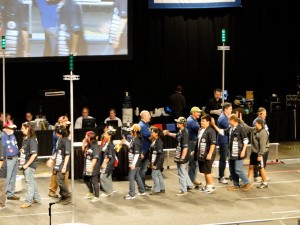
Mar 14, 2011 | Innovation

Baldwin Robotics team rocked this weekend at the FIRST Robotics Competition’s San Diego Regional tournament by making it to the finals. Although their alliance ultimately lost their final match, they did an outstanding job representing their school and Maui. You can see the final match here. Baldwin is team #2439.
Mar 10, 2011 | Community
 The Focus Maui Nui process identified the key role of government and public officials in responding to community values and needs, and the importance of open, ongoing communication. To promote the dialogue, we present the first in a series of profiles of the newly appointed County Department Directors.
The Focus Maui Nui process identified the key role of government and public officials in responding to community values and needs, and the importance of open, ongoing communication. To promote the dialogue, we present the first in a series of profiles of the newly appointed County Department Directors.
David Goode, appointed in January 2011 as County of Maui’s Director of Public Works, has been here before – he served as Deputy Director of Public Works, and then Director, in the County administrations of Linda Lingle and James “Kimo” Apana between 1995 and 2002. Sandwiched between his two stints, David served as President of KSD Hawaii, one of Maui’s premier development companies. “Working in both the public and private sector has given me an excellent overall view of how things work – and how they can work better,” says Goode.
The Department consists of three divisions: Highways, Engineering, and the Development Services Administration. Its work includes road paving, designing, installing and taking care of sidewalks and drainage systems, maintaining traffic signals and signs, and managing the County’s Kalana O Maui complex in Wailuku. The Department of Public Works also oversees building and housing codes, grading and nuisance ordinances, and beautification projects. “One of our primary goals is to streamline the permit process and upgrade our codes, and help people navigate through the regulatory process” says Goode. “We also put a very high priority on responding to the public and listening to what our residents want.”
Goode has a long track record in construction project management. “I love to see things built and to play a part in making projects happen,” he says. When he’s not seeking constant improvement and efficiencies in his County role, Goode enjoys spending time with his family, playing golf, and coaching AYSO soccer. He is a member of the Board of Directors of Carden Academy, the independent school Upcountry, and serves on the State Board of Land and Natural Resources, which oversees all policy decisions for DLNR.
Mar 3, 2011 | Sustainability

Lehn Huff, Maui School Garden Network
The Maui School Garden Network that Lehn Huff created and coordinates as a community volunteer supports project-based learning for students of all ages across the County. It also serves to promote valuable information on nutrition and growing food locally. The Network is a partnership involving over 40 public and private schools (from preschool through high school) across the County and a broad alliance of entities including the County of Maui, UH-Maui College, the Nutrition and Physical Activity Coalition, Community Work Day, and others.
Lehn Huff is one of the most respected educators on Maui; she started and headed the Middle School at Seabury Hall for 20 years until her retirement in 2008. Since then, her volunteer work has focused on mentoring young educators, global education initiatives, supporting women in developing countries starting their own businesses or schools, and food and energy sustainability issues. Huff was inspired to form the Maui School Garden Network because it involved young people in learning how to take seeds, nurture them and grow them to produce food. “This empowers our students, makes them the guardians of their own nutrition, gives them physical exercise, and provides them with a living lab for project learning that integrates their curriculum: math, science, technology, social studies, and the arts,” Huff elaborates.
“It’s also about sharing information, learning about best practices, and initiating community involvement through parent workshops and volunteering.” Maui is the first County in the State to have restaurants and farms “adopting” schools and providing resources through the Network, which has developed over the last two years. “It’s exciting – sustainability and small scale gardening yielding fresh, local produce are part of a grass roots movement that’s happening on a national scale. Michelle Obama put in a garden at the White House, which helped put these issues on the national map,” adds Huff. In March 2011, a website will be launched, at http://mauischoolgardennetwork.org/.
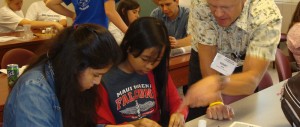
Feb 23, 2011 | Education
 Ten things you can do to contribute to Education:
Ten things you can do to contribute to Education:
- Read to your child daily.
- Tutor one hour a month at your favorite school.
- Check that homework gets done every day.
- Provide feedback to the Board of Education.
- Start a book sharing program to “recycle” gently used books.
- Adopt an intern at your business.
- Donate supplies to a classroom.
- Show up at school fundraising events.
- Create a school garden.
- Organize a Math Night at your school with other families.
What else can we do to contribute to education? Leave a comment below and share your thoughts.
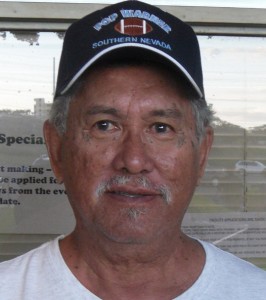
Feb 17, 2011 | Education

Joe Apolo President of Maui Pop Warner and Community Volunteer
Improving education is a key community value identified through Focus Maui Nui, and Joe Apolo, President of Maui Pop Warner, takes pride that Pop Warner football is the only national sports organization in America that requires its participants to meet academic standards in the classroom in order to play on the field. “The Pop Warner scholars program gives our players an appreciation of the role that academics, combined with athletics, can play in their lives,” says Apolo. Students have to maintain a 2.0 grade average, or 70 percent, equivalent to a “C” grade or better to be able to play Pop Warner.
“It’s a great incentive, and we always see grades go up as a result,” observes Apolo. “Of course, some of our players excel anyway, and for them, there are national Pop Warner scholarships available—one of our Maui players qualified recently. For many of our kids, following in the footsteps of Kaluka Maiava is their goal, and we can tell our players that good academics can increase the chance of college scholarships.” Maiava attended Baldwin High School and the University of Southern California before joining the Cleveland Browns in 2009.
Apolo has presided over Maui Pop Warner since 1986. “I got involved because I was a volunteer, I’d been coaching for over 20 years — and I didn’t know what I was getting into,” observes Apolo with his trademark dry wit. Anyone that knows how seriously coaches and parents take their football here on the Valley Isle will appreciate that spending 25 years at the helm of Pop Warner is a remarkable achievement. “I really believe in the program, which is why I’m still here,” says Apolo. “We have 23 teams at all levels, with over 500 kids playing football each year. We’re making a big difference for many of Maui’s students—and their families.”
Feb 9, 2011 | Community, Sustainability

Harlan Hughes
Hughes has retired now from the food and beverage industry, a background that helps explain his particular passion in giving back. He learned about volunteerism and serving the community from his mother, Lottie, who was a dedicated volunteer here on Maui well into her 80s. He also developed and directs the annual “Chefs on the Beach” fundraiser (netting $20,000 last year) which helps support several Maui nonprofits, and his work for the Food Bank serves as another remarkable example.
The Food Bank, headed by Executive Director Richard Yust, in turn leaves no stone unturned in its mission to mitigate hunger across the County. Whether it’s collecting goods from community food drives or retail and wholesale store donations, distributing perishable items through partner agencies in a timely manner, or working with local farmers to bring in donated nutritional fresh produce, about 140,000 pounds of food per month reaches needy families and individuals. “We’re all about partnerships,” says Yust. “By working together, we are able to create win-win situations.” About 90 community service agencies and faith-based organizations that run a total of 105 programs access the inventory of the Food Bank, and over 10,000 recipients each month benefit through these programs – and from the dedication of volunteers like Harlan Hughes.
 The Focus Maui Nui process identified the key role of government in responding to community values and needs, and the importance of open, ongoing communication. To promote this dialogue, we continue a series of profiles of newly appointed County Department Directors.
The Focus Maui Nui process identified the key role of government in responding to community values and needs, and the importance of open, ongoing communication. To promote this dialogue, we continue a series of profiles of newly appointed County Department Directors.









